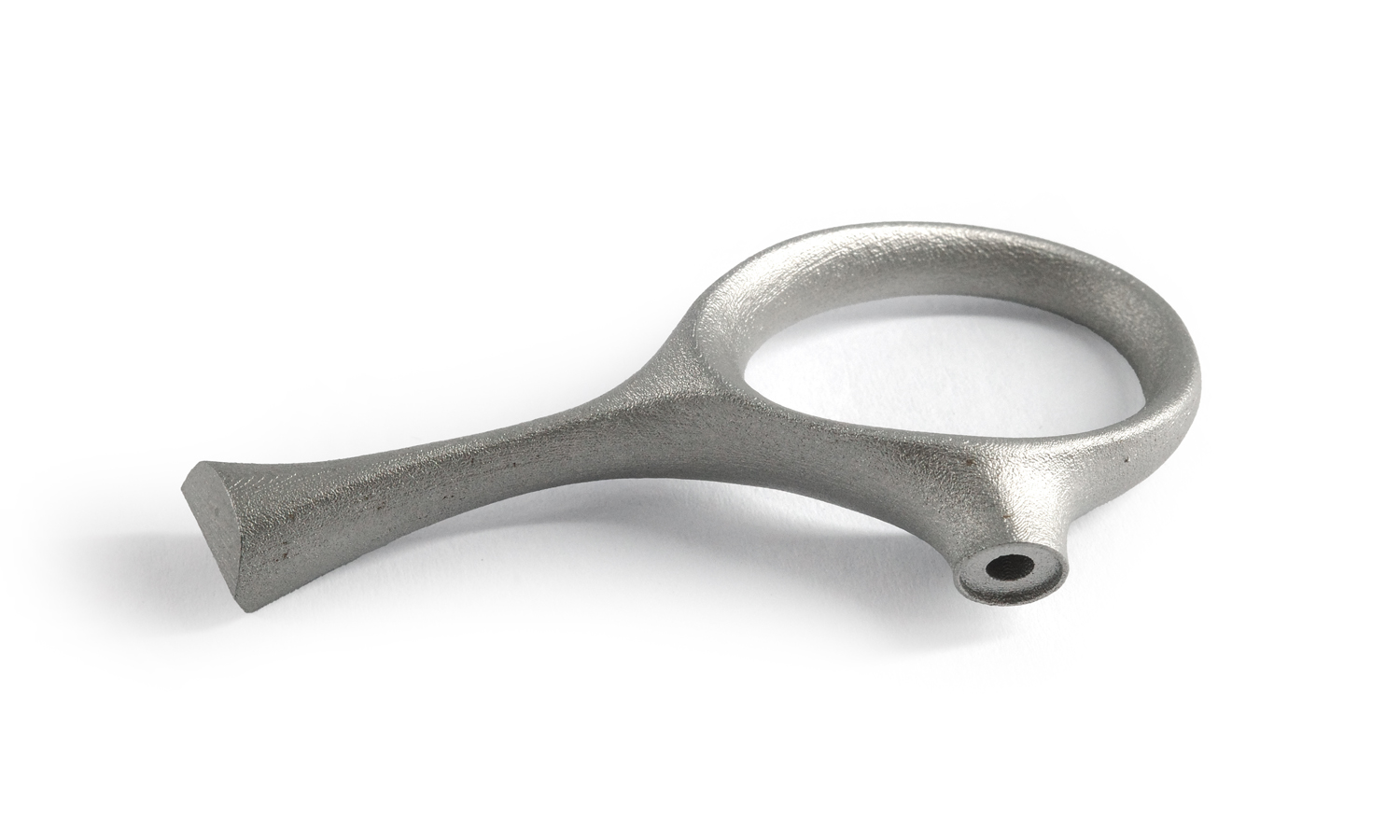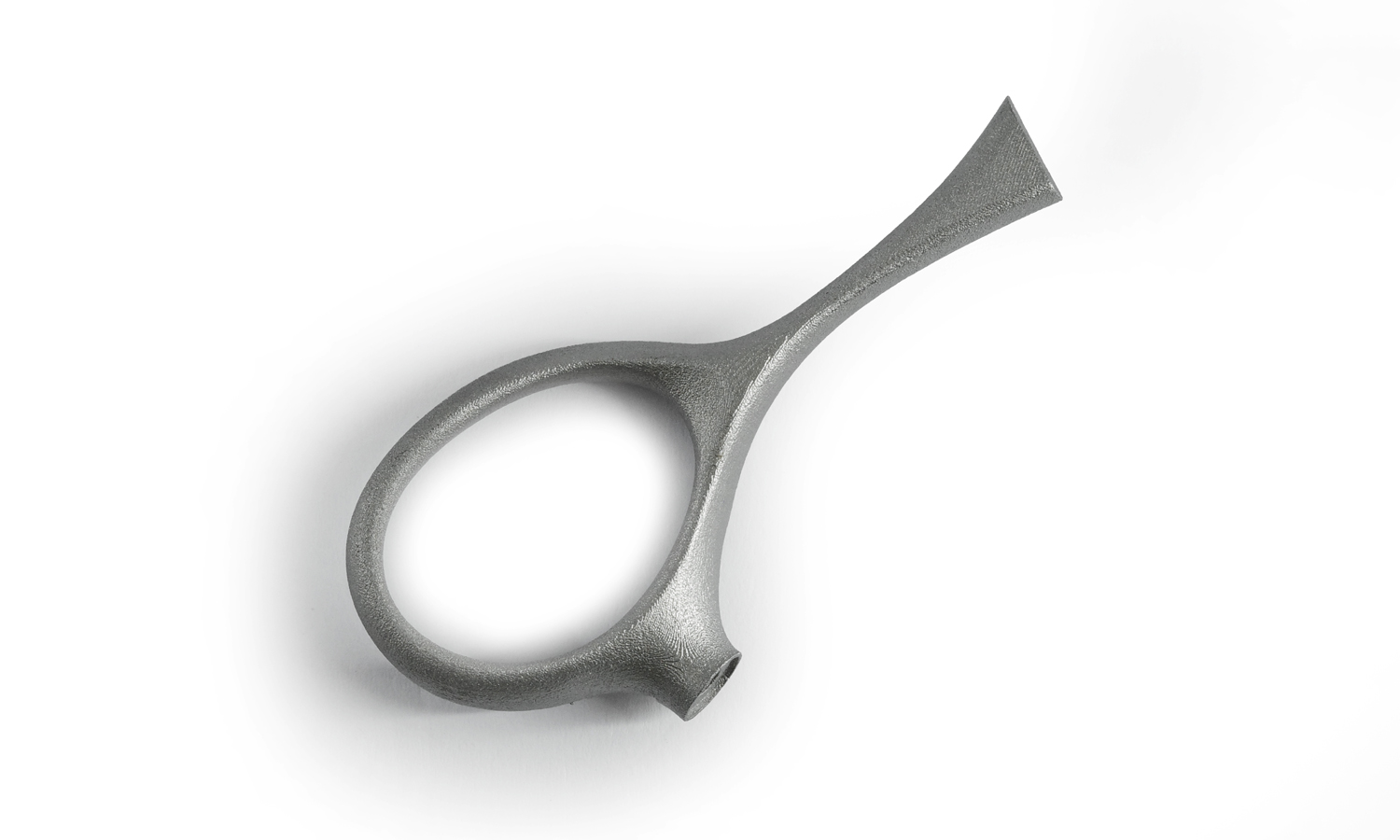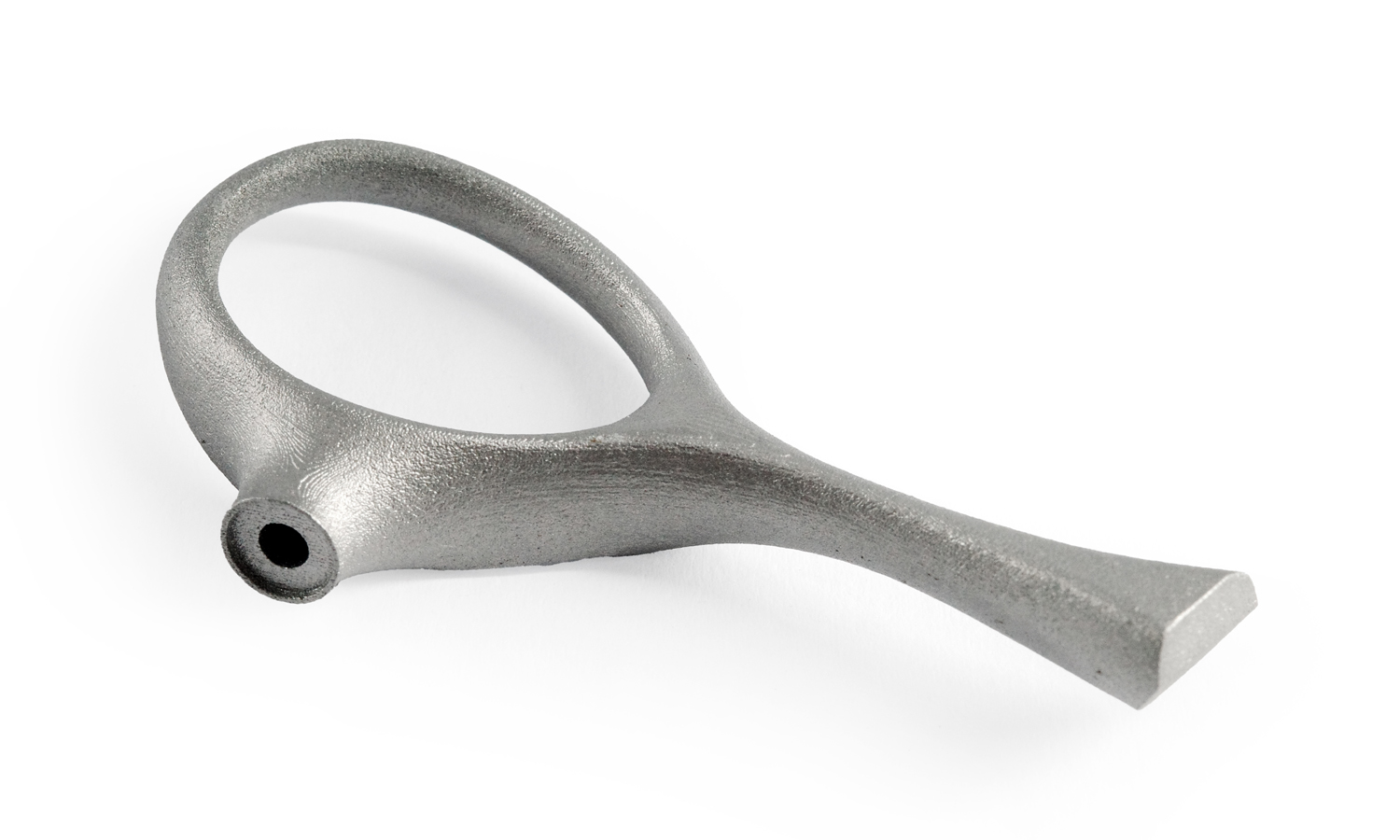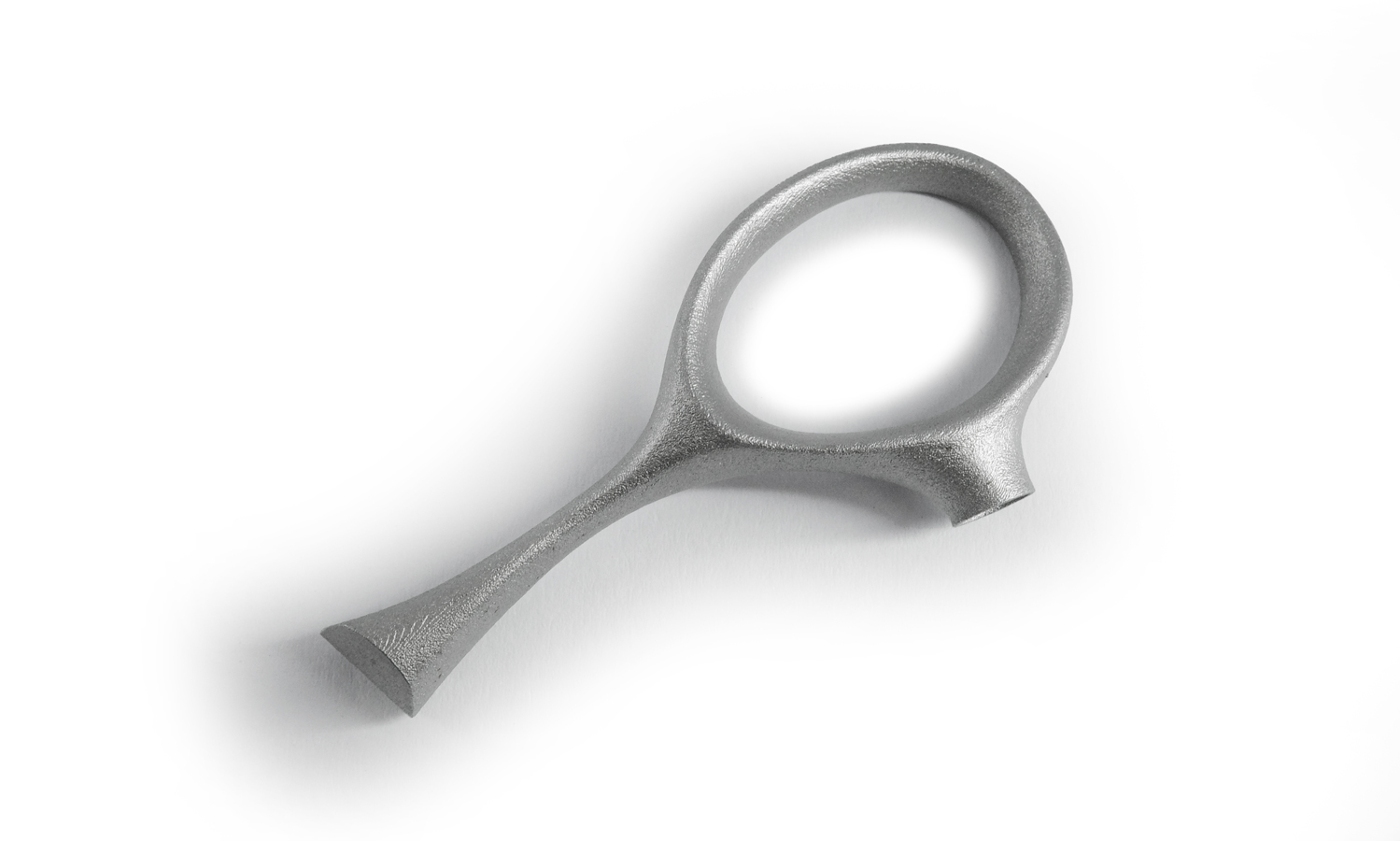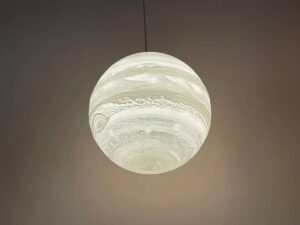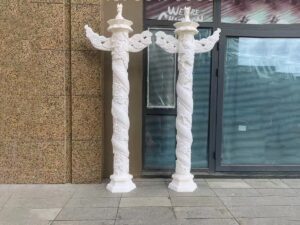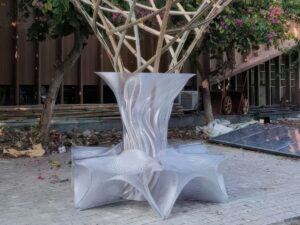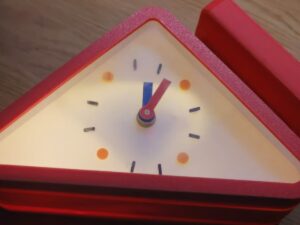Gallery
About Project
17-4PH stainless steel is a precipitation-hardening alloy renowned for its exceptional combination of strength, toughness, and corrosion resistance. It’s widely used in aerospace, automotive, and medical industries due to its reliable performance in demanding environments.
The 17-4PH Loop Handle: A Showcase of Precision Metal 3D Printing
The image below presents a Binder Jet 3D-printed 17-4PH stainless steel loop handle in its raw, unfinished state. This advanced manufacturing technique allows for the creation of intricate metal components with unparalleled precision and design flexibility.
Key Features of the 3D Printed 17-4PH Loop Handle
- Intricate Geometry: The seamless transition from the loop to the cylindrical section, along with the precise blind hole, demonstrates the capabilities of Binder Jet 3D printing.
- Superior Mechanical Properties: 17-4PH stainless steel offers excellent strength, toughness, and fatigue resistance, making it ideal for high-stress applications.
- Corrosion Resistance: The alloy’s inherent corrosion resistance ensures long-lasting performance in harsh environments.
- Surface Finish: The raw, unfinished surface, characterized by a slightly rough texture, is typical of Binder Jet 3D printed parts.
- Functional Design: The flat, rectangular end suggests potential uses such as prying, scraping, or fitting into a slot.
Unlock the Potential of Metal 3D Printing with FacFox
FacFox offers a comprehensive range of Binder Jet metal 3D printing services, enabling you to bring your innovative designs to life. With our state-of-the-art technology and experienced team, we can help you achieve unparalleled precision and complexity in your metal components.
Ready to explore the possibilities of Binder Jet 3D printing with 17-4PH stainless steel? Contact FacFox today to discuss your project requirements.
Solution
- Step 1: Powder Bed Preparation. A thin layer of 17-4PH metal powder was spread evenly across a build plate.
- Step 2: Binder Jetting. A printhead selectively applied a liquid binder to the powder, binding the particles together to form the desired shape.
- Step 3: Layer Deposition. After each layer was bound, a new layer of powder was spread, and the process was repeated.
- Step 4: Debinding. The partially-built part was removed from the build plate and placed in a debinding chamber, where the binder was removed through a heat treatment process.
- Step 5: Sintering. The debinded part was sintered in a high-temperature furnace. During this process, the metal powder particles fused together, forming a solid, dense metal component.
- Step 6: Post-processing. The raw piece did not require support removal. It could be further processed to achieve the desired surface finish and dimensional accuracy. This may have involved machining, grinding, or polishing.
